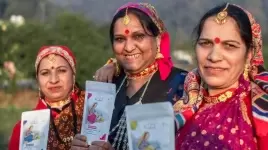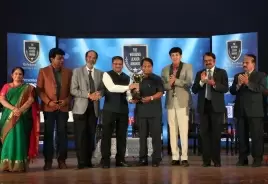How Four Friends Built a Rs 100 Crore Turnover Business Starting With a Cow Farm
29-September-2017
Vol 8 | Issue 40
Four friends from Jharkhand chucked their corporate jobs and decided to do something different. They pooled in their savings and… bought cows!
It’s a risk that paid-off and, within five years, their dairy business has milked out a turnover of over Rs 100 crore, becoming one of the most popular brands of the state.
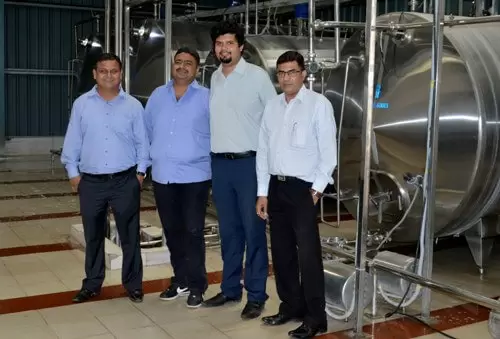 |
|
Founders of Osam Dairy (from l to r) Abhishek Raj, Harsh Thakkar, Abhinav Shah, Rakesh Sharma at their plant in Ranchi (Photos: Monirul Islam Mullick)
|
Osam Dairy is currently present in 19 districts and works with 140 distributors and over 3,000 retailers across Jharkhand. From four, they are now 270 people-strong and their team is only getting stronger.
It all started in 2012 when the four partner-cum-friends, Abhinav Shah (35), Harsh Thakkar (40), Rakesh Sharma (38), and Abhishek Raj (36), found themselves at the same junction in life: bored of their jobs and wanting to do something of their own.
 Three of them, Abhinav, Abhishek and Rakesh, have known each other since 2001, when they met for the first time at CA tutorial classes in Ranchi, while Rakesh and Harsh met during their graduation days in 1997.
Three of them, Abhinav, Abhishek and Rakesh, have known each other since 2001, when they met for the first time at CA tutorial classes in Ranchi, while Rakesh and Harsh met during their graduation days in 1997.
After becoming CAs in 2004, the trio, Abhinav, Abhishek and Rakesh, worked for different multinational companies.
Abhinav joined Ernest & Young at a package of around Rs 5 lakh per annum and shifted to Delhi, from where he resigned as a manager in January 2012, when he was earning around Rs 32 lakh per annum.
Rakesh worked for different corporate companies before he quit his job as AGM (corporate finance) in a private company in 2010. His package was then around Rs 14 lakh per annum.
Harsh Thakkar, who hails from a more humble background, got into the FMCG business after passing out of school in 1997.
“My father ran a grocery store in Ranchi, so it was a natural choice for me,” he says. In 2012, he decided to try his luck with dairy farming on Rakesh’s advice.
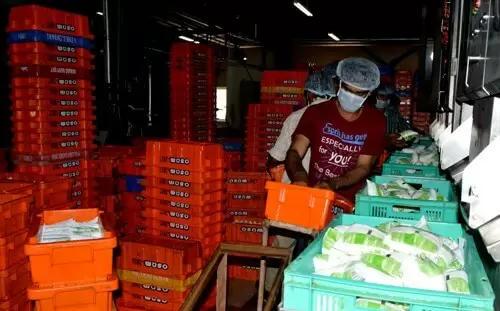 |
|
Osam Dairy produces two variants of milk, standard and toned, as well as dahi, paneer, lassi and chhanch (butter milk)
|
It was Abhishek who first thought of the whole thing. He was working with a multinational company as manager (internal audit) at Luxembourg in 2011, at a fat package of around Rs 40 lakh per annum, when the idea struck him.
“I was impressed by how the dairy business was conducted there,” he says, “and thought there was a good scope do that back in Jharkhand.”
The idea came at the right time, when all four of them were ready to try something new. They were bitten with the same bug: To start something of their own and make it big.
The ask wasn’t little but they were ready to make the dive. They pooled in Rs 1 crore for the new business with each contributing an equal share from their savings.
The founders then purchased one acre of land at Ormanjhi, around 30 km from Ranchi, for Rs 20 lakh in 2012. An additional Rs 30 lakh was spent on setting up the dairy farm.
They founded H.R. Food Processing Private Limited with an unregistered brand name Raya (a Sanskrit word meaning ‘flow of the river’) on 19 April 2012. Abhinav went to Kanpur for a one-month course in dairy farming to learn how to take care of the health and hygiene of the animals.
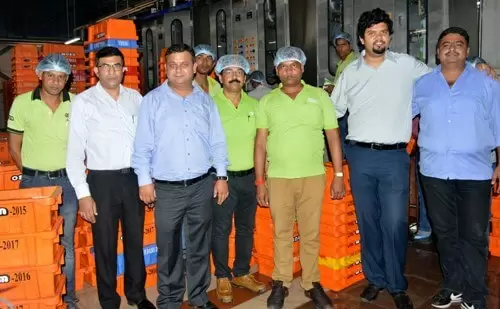 |
|
The founders with some of their staff members at the plant
|
But not having expertise in the area still cost them dearly. “After completing the course, I went to Khanna in Punjab to purchase Holstein Friesian cows,” says Abhinav.
“We bought 40 animals for Rs 35 lakh but as soon as they arrived, we got to know they were suffering from the Foot and Mouth disease. We lost 26 of them within one month. It was both a financial and emotional blow to see the animals dying.”
Rakesh looks after the finance for the company. “We then had to pool in another Rs 50 lakh from our savings,” he says, talking about the initial rough time, “and purchased 100 new cows of the same breed from Punjab and Bihar in the same year. The investment was now Rs 1.5 crore.”
They got an FSSAI license to sell dairy products but business was slow in the beginning. “Initially, we started selling unbranded raw milk by doing home delivery in three localities of Ranchi,” explains Harsh. “We started with seven employees who used to supply milk door to door.”
The initial sales were 300 litres, which jumped to 1,000 litres in six months. “There were hardly any competitors in the raw milk market but the problem was that it had to be used up within three hours after getting milked,” says Harsh, who looks after marketing.
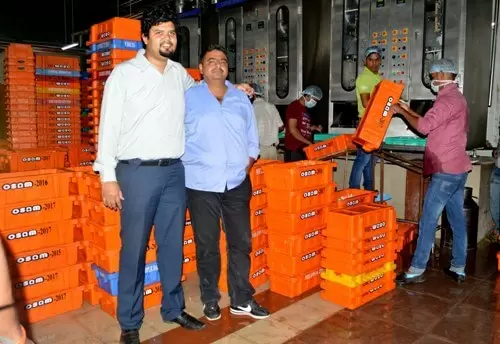 |
|
Abhinav (l) resigned his job in 2012 from Ernest & Young when he was earning around Rs 32 lakh per annum. To his left is Harsh Thakkar
|
They reached a turnover of around Rs 26 lakh in the first fiscal year.
Abhishek, who looks after operations, says that they decided to set-up their own dairy processing plant in early 2013. “It was a big decision to start the plant as it required an investment of around 20 crore,” remembers Abhishek.
“We started approaching banks and other financial institutions for arranging money. We managed to rope in Mumbai-based Avishkar, an early stage social impact fund, in September 2013 and got Rs 15 crore. We also got Rs 7 crore loan from a nationalised bank at an interest rate of 13.5 percent per annum.”
Then they hired experts from the dairy business as they had little knowledge about the field.
“We got one acre of land on a 30-year lease at Rs 17 lakh in Ramgarh Industrial Area from the state government in January 2014,” says Abhishek. The construction began in April and it took one year to commission the plant.
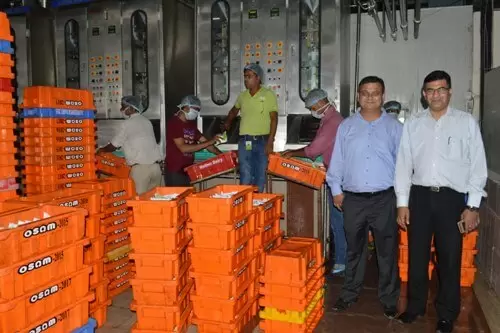 |
|
Rakesh Sharma (r) and Abhishek Raj quit their high paying corporate jobs to plunge into the dairy business
|
“Simultaneously, we also started a milk procurement network in Bihar as 1,000 litres of milk from our dairy farm was not enough to run the plant,” explains Abhishek.
“We started buying milk from farmers in 50 villages in Bihar by paying them a premium price. At present, we buy milk from over 12,000 farmers in over 450 villages in Bihar.”
They sold their dairy farm and the cows and their new plant started functioning in April 2015. But the brand name had to change to Osam in 2014 when they tried to register Raya and discovered that it was already taken by an oil company in Maharashtra.
Osam Dairy started producing two variants of milk, standard and toned, as well as dahi, paneer, lassi and chhanch (butter milk).
“The plant started with a staff strength of around 50 members and the production capacity was 2,600 litres of milk products per day,” says Abhishek. “By the end of 2015, it had jumped to 15,000 litres of milk products every day. Now, the production capacity is around 65,000 litres per day.”
When they realised the market was good they started hunting for space for another plant and eventually bought 6.5 acres in Jamshedpur in August 2016.
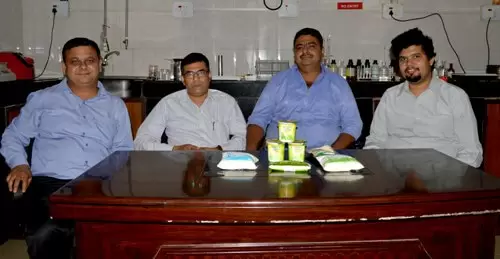 |
|
The Osam founders have set a target of achieving Rs 500 crore turnover by 2022
|
This time they spent around Rs 6 crore in its construction. The plant has a production capacity of 1 lakh litres every day and became operational on 17 September 2017.
Osam Dairy has received the Best Young Dairy award from the Jharkhand Government in 2013, and the Most Promising Dairy Brand award by Assocham in 2016.
All four friends are married and while the wives of two are homemakers, Abhinav’s wife works with an NGO and Harsh’s wife took over helping with the family business after he left to join his friends.
The boys are all set to turn their company into a 500 crore venture by 2022. They are looking to expand their business to the neighbouring state of Bihar.
About the mantra for success, the four unanimously say that they have never compromised on quality and always tried to give the best products to the consumer. Osam is truly awesome.
You might also like
Man who sold export reject shirts on the footpath now owns multiple businesses





